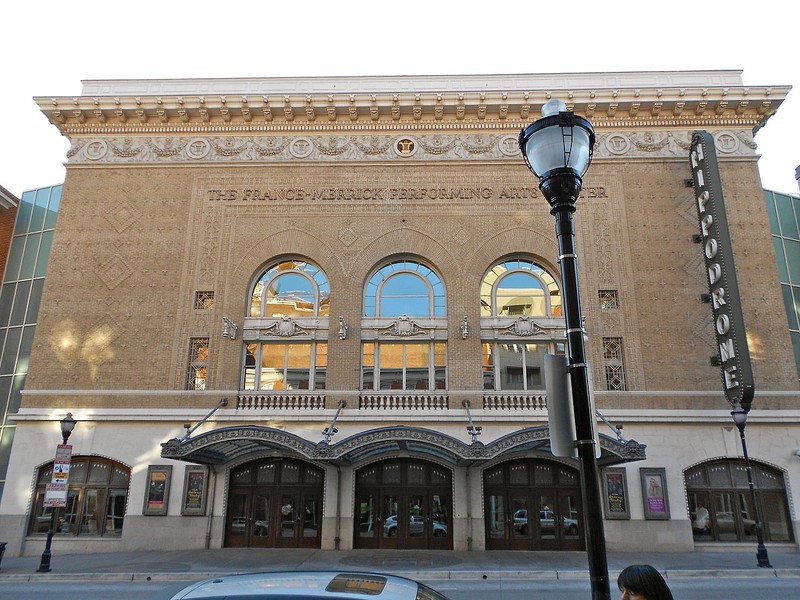Hippodrome Theatre
Introduction
Text-to-speech Audio
When it opened in 1914, the Hippodrome Theatre became one of Baltimore's premiere performance venues and remains so today. At that time, this part of downtown was a thriving entertainment and commercial center with theaters and a variety of businesses including banks, hotels, department stores and garment companies. The Hippodrome is one of the few buildings in the neighborhood from the period still standing. It also significant for its attractive architecture. Designed by noted theater architect Thomas Lamb in the Beaux Arts style, it features a three arched main entrance with a curved marquee, a variety of decorative brickwork including diamond and square shapes, and a set of three arched windows with Moorish-like arches. The auditorium has a capacity of 2,300 seats (originally it was 3,000) and is richly decorated. The Hippodrome is listed on the National Register of Historic Places and is now part of the France-Merrick Performing Arts Center complex.
Images
The Hippodrome Theatre was built in 1914 and is currently part of the France-Merrick Performing Arts Center.

Backstory and Context
Text-to-speech Audio
Local purveyors of movie supplies and equipment, Marion Pierce and Phillip Scheck, established the Hippodrome Theater Company and bought the property in 1913. They asked Lamb (1871-1942) to design the finest theater in Baltimore. By then he had designed many other theaters including a number in New York City. Lamb was born in Scotland and did not have formal training in architecture. He was in New York City by 1892 and became an apprentice building inspector before getting into architecture. Notable works of his included the Roof Theater (1909), City Theater (1910) and the Royal (1913), all of which were built in New York City. The Hippodrome was one of his last extravagant theaters. He also designed theaters in England, India, North Africa, Australia and Egypt.
The Hippodrome was successful, especially in its early years. In 1920 in drew a weekly attendance of 30,000 patrons who enjoyed a variety of vaudeville shows and silent movies. Musicians played the piano and organ and there was also an orchestra. By 1931, the Hippodrome had established itself as a premiere vaudeville house. The best performers of the day entertained audiences here including Jack Benny, Bob Hope, Benny Goodman, and the Andrews Sisters. Frank Sinatra's debut with the Tommy Dorsey Orchestra was another notable performance.
The Hippodrome remained popular through the 1950s. The last stage show was in 1959 and four years later the theater underwent a major renovation for the regional premiere of the film "Cleopatra." The world premiere of the film "Slaves" was held here in 1969. Business declined over the next two decades and the theater closed in 1990; by then it was the last downtown movie theater. It later reopened in 2004 as part of the performing arts center complex, which includes two historic bank buildings.
Cite This Entry
M., Ben. "Hippodrome Theatre." Clio: Your Guide to History. January 31, 2023. Accessed January 25, 2025. https://theclio.com/entry/163602
Sources
"History." France-Merrick Performing Arts Center. Accessed January 30, 2023. https://www.france-merrickpac.com/index.php/history.
Murphy, Michael V. "Hippodrome Theatre." National Park Service - National Register of Historic Places Nomination Form. January 14, 2000. https://mht.maryland.gov/secure/medusa/PDF/NR_PDFs/NR-1229.pdf.
Wikimedia Commons: https://commons.wikimedia.org/wiki/File:Hippodrome_Baltimore.JPG


